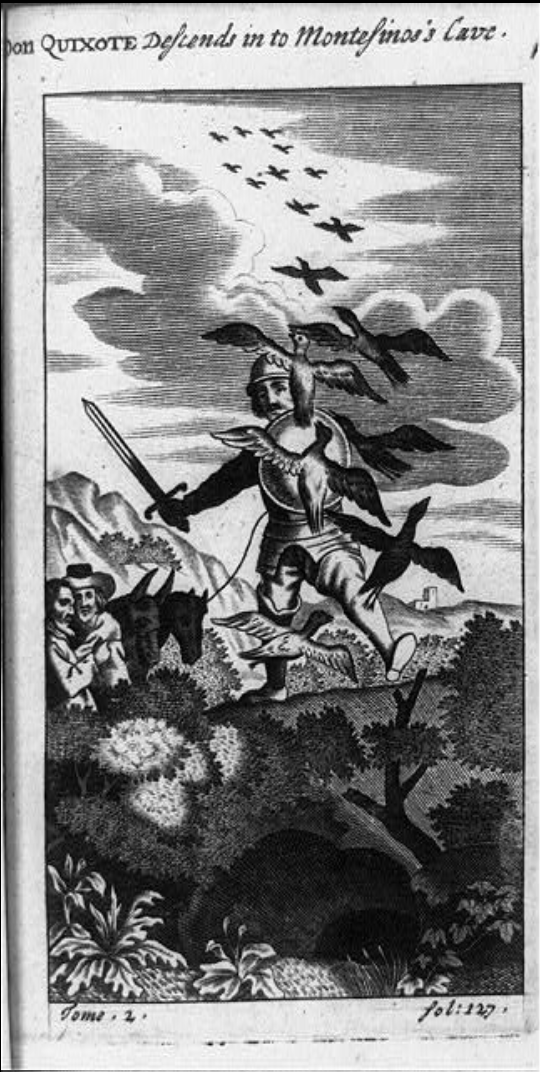Teach This Poem, though developed with a classroom in mind, can be easily adapted for remote learning, hybrid learning models, or in-person classes. Please see our suggestions for how to adapt this lesson for remote or blended learning. We have also noted suggestions when applicable and will continue to add to these suggestions online.

Look closely at this image from the text of Don Quixote.
The following activities and questions are designed to help your students use their noticing skills to move through the poem and develop their thinking about its meaning with confidence, using what they’ve noticed as evidence for their interpretations. Read more about the framework upon which these activities are based.
-
Warm-up: Look closely at the image from the text of Don Quixote. What stands out to you in the image? Look again. What else can you find? Based on this image, what themes do you think might be present in the book?
-
Before Reading the Poem: Work in small groups or pairs to read the first few pages of Don Quixote by Miguel de Cervantes. As you read, what do you understand about the text, the characters and the setting? What questions do you have about the text, the characters and the setting?
-
Reading the Poem: Now, read the poem “A Sonnet on Cervantes” by Rubén Darío silently. What do you notice about the poem? Annotate for any words or phrases that stand out to you or any questions you might have.
-
Listening to the Poem (enlist two volunteers to read the poem aloud): Listen as the poem is read aloud twice, and write down any additional words and phrases that stand out to you.
-
Small-group Discussion: Share what you noticed in the poem with a small group of students. Based on the details you just shared with your small group and the resources from the beginning of class, what connections can you make about the resources and the poem? How might the speaker in the poem feel about Miguel de Cervantes and the text?
-
Whole-class Discussion: How does the format of this sonnet impact your reading of the poem? (Teachers, your students might enjoy learning more about sonnets.) After reading this poem, what questions do you feel are answered? What questions still remain?
-
Extension for Grades 7-8: Darío’s poem is, in many ways, an homage to Cervantes. Are there any TV shows, movies, books, characters, art, music, etc that you feel profoundly connected to or disconnected from? Why? Create an homage or criticism for this work. Your piece might be a sonnet, a piece of music, a collage, etc. (Teachers, if you feel like your students might need an example, here is a musical homage to Cervantes.)
-
Extension for Grades 9-12: As a class, create a book club and read Don Quixote in its entirety. As you read, keep track of key passages and your reactions to them. After you read, work with a small group of students to perform a skit from one of the scenes in the book.
“Yet unlike the chivalry books and perhaps all other prior fiction, Cervantes’ story deeply investigates the protagonist’s inner life. Don Quixote matures as the narrative develops, undergoing a noticeable transformation. This literary revelation has led many scholars to call Don Quixote the first modern novel.” Watch an animated explanation of Cervantes impact on modern literature with this TED-Ed video.
